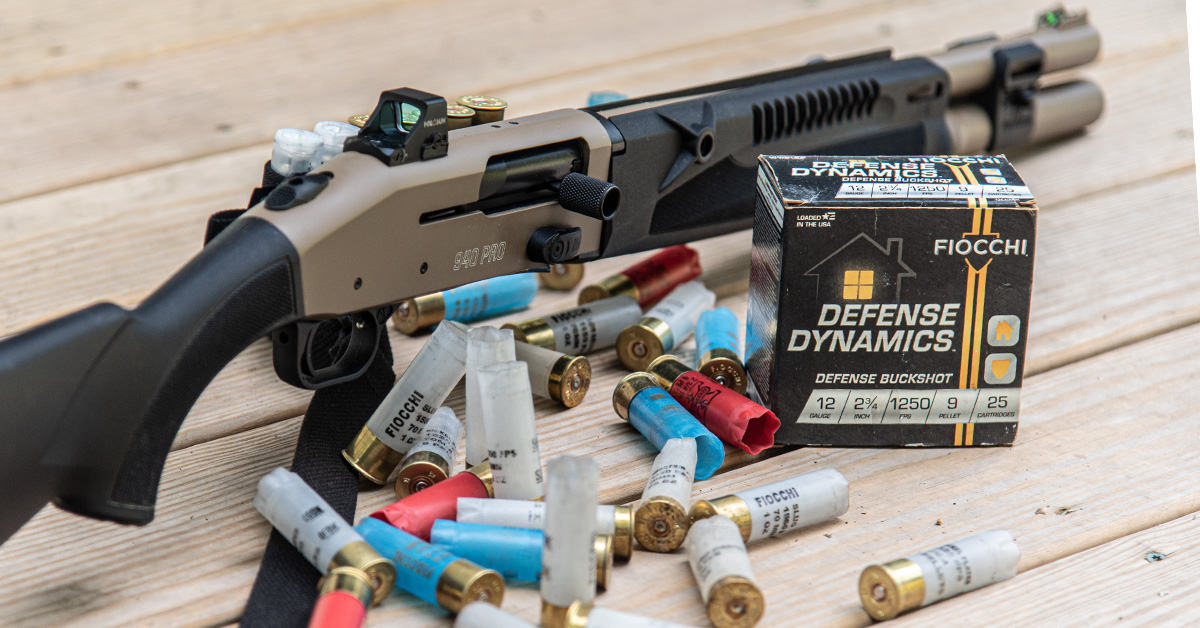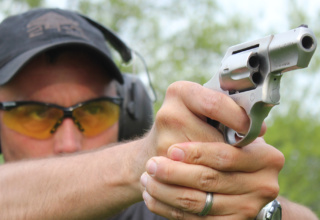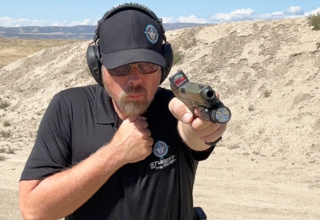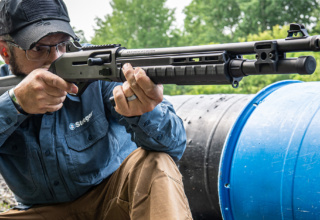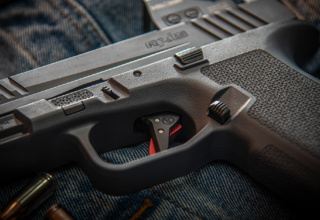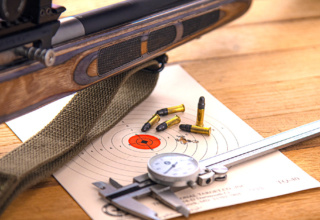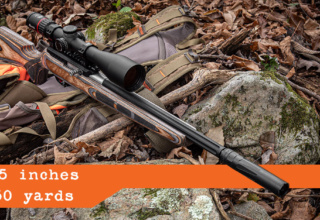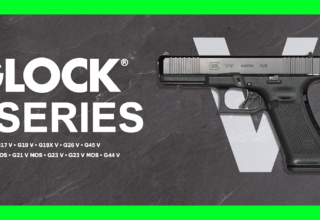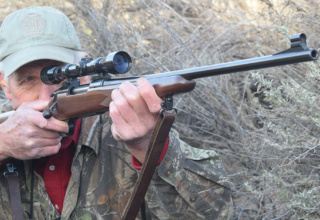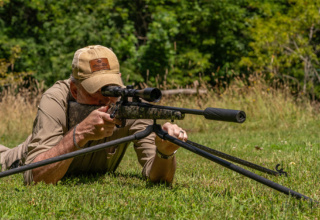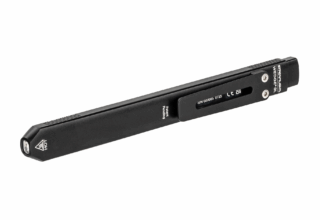There’s an adage that says, “you don’t know what you don’t know.” Conversely, you may not know as much as you think you know. If you’ve never taken professional defensive shotgun training, know this: you need it!
by Rob Reaser
I’m not going to throw rocks or cast aspersions here, but I am going state a fact that will have many long-time gun owners sit up with incredulous indignation.
For most who have never received quality, formal defensive firearms training and who have never invested real time practicing what they have learned, their ability to survive a serious gunfight is largely going to come down to blind luck or providential intervention.
Sure, there are many gun owners who have leveraged diligent practice with realistic training scenarios to give them the skills — including the mindset — needed to engage and survive a lethal encounter. But many more simply do not possess even the fundamentals necessary to stand unharmed at the end of a lethal force event.
It’s one thing to elevate marksmanship and gun handling skills that result in satisfactory target scores. It’s an entirely different thing to apply them when you are facing life-or-death decisions, where reaction times are measured in fractions of a second.
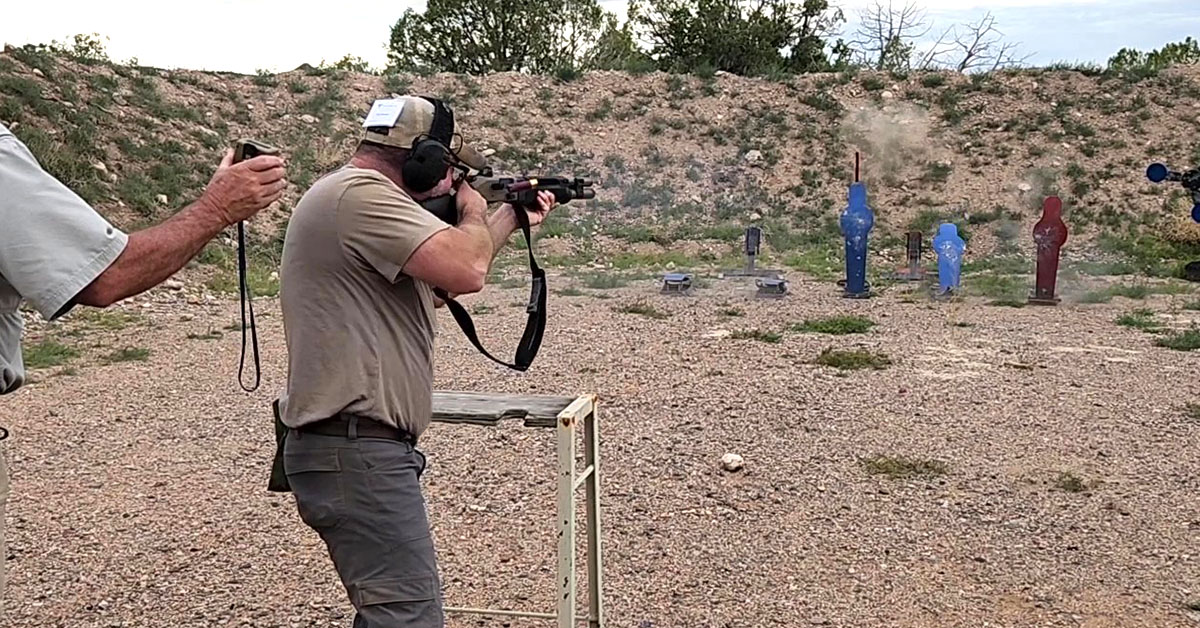
Those who can recall their first real defensive firearm course know exactly what I’m talking about. You listen carefully to the instructor as he or she begins with the elementary safety and gun handling modules, all the while thinking, “Yeah, yeah…I know all of this.” The instructor eventually moves on to single-shot live-fire drills, then multi-shot drills, then timed drills, and then timed drills engaging multiple targets, then mixes in emergency reloads and failure drills and movement drills under the clock and pretty soon you realize you don’t have the high-speed, John Wick gunfighting skills you fantasized you had.
Experience a momentary hiccup under pressure and your mind is blown. You might fumble around, trying to make something work, or just stare slack-jawed at your gun, thinking, “WHAT DO I DO?!?!”
“That could never happen to me!” you say?
That just proves you’ve never been properly trained and tested because we have all experienced these moments under the guidance of an instructor who is pushing students to develop life-saving defensive firearm skills.
The first thing you must do to learn is to set aside your pride, forget about what you think you know, and give yourself over to your instructor.
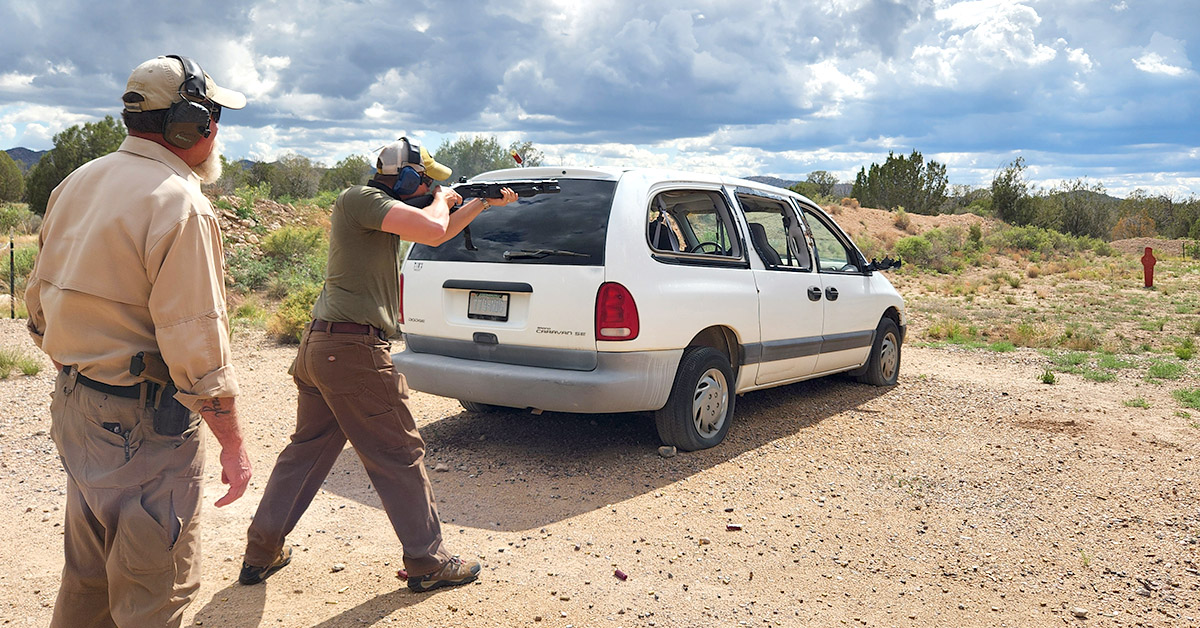
There is a golden truism in martial circles that says we revert to our level of training in a crisis. It is an assumed quote, or a distillation of philosophy, credited to the 7th century B.C. Greek poet and soldier Archilochus that goes, “We don’t rise to the level of our expectations. We fall to the level of our training.”
Whether Archilochus said it or not, it is a statement worthy of bold body ink because that is exactly how we react under extreme stress. This is why proper firearm training — emphasizing correct form, process, and repetition — followed by routine practice is so vitally important. It builds the essential automatic responses and muscle memory so that we efficiently and effectively do the right things in a fight when our mind is screaming, “RUN!”
But this article is about defensive shotguns, and someone will say, “What’s to know? It’s a shotgun. Rack and blast!”
Not even close.
I’ve had formal defensive handgun and carbine training, so I’ve long understood that the shotgun is no different than the pistol or rifle in terms of needing to build critical handling, operational, and remediation skills. But until recently, I had never had the opportunity to do that with the defensive shotgun. That changed when Mossberg invited me and four other firearms journalists to Gunsite Academy in Paulden, Arizona, to take an accelerated version of the academy’s 5-day 260 Defensive Shotgun course. Here, we would exercise some of Mossberg’s newest defensive shotgun offerings, including the outstanding 940 Pro Tactical SPX model that I ran through the entire course, and receive solid defensive shotgun training in the process.
The experience was worth every second spent under central Arizona’s high-desert sun, and cramming five days of training into three wasn’t a stretch since everyone in the small group had ample trigger training going into the course. This allowed us to transition from module to module at a relatively brisk pace.
Yet despite our backgrounds, we all rightly set aside our earned experience and approached the course, under the expert guidance of Gunsite Rangemaster Mario Marchman and Instructor Chris Currie, as rank beginners. Because that is how you learn from those who know way more than you think you do. In the process, I was exposed to many nuances of shotgun handling, load selection, and effective defense applications of the platform that boosted my competency and confidence far beyond where it was when class started on Day One.
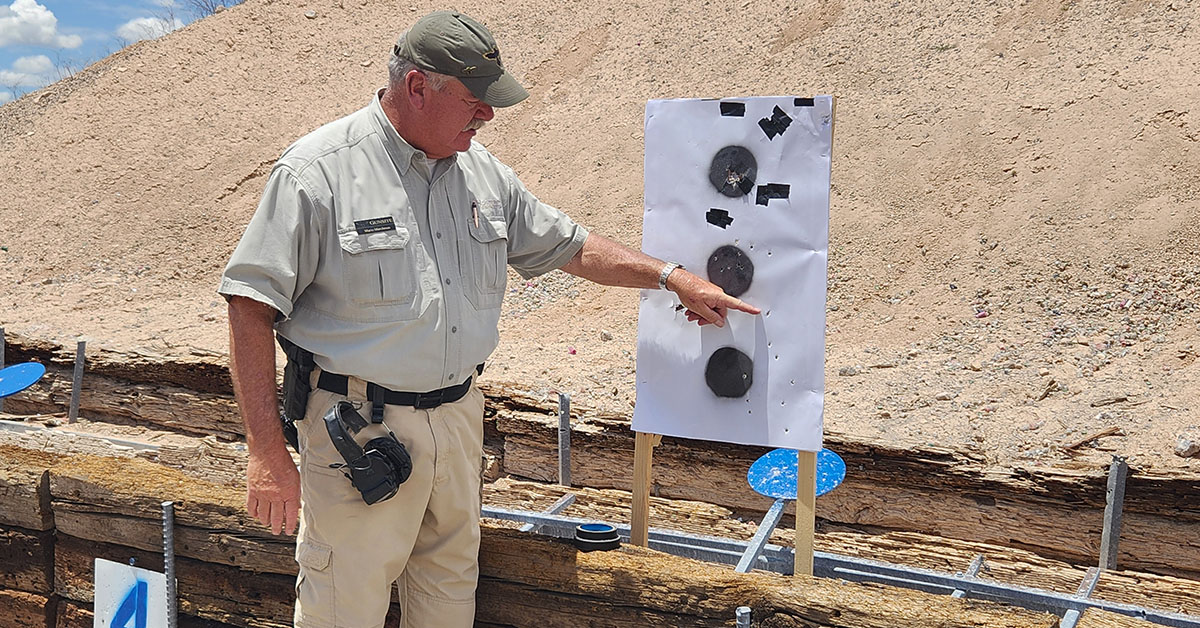
Many shotgun myths are dispelled with good training, the first of which is the concept of the shotgun being a rack-and-blast weapon. If you think a shotgun doesn’t demand good marksmanship skills, you’ll soon find out otherwise. Buckshot, the common defensive load, holds a tight pattern at close range — so tight that you need to aim it just as carefully as you would a rifle or pistol at those distances. This is why it is important that your shotgun’s point-of-aim correlates to the point-of-impact.
If you use a red dot as your sighting system (a wise choice), then that optic must be zeroed to the gun and to the ammunition you intend to use. Just like a handgun or rifle, a shotgun will exhibit different points-of-impact with different loads. For example, a #00 buckshot load from Hornady may shoot differently than a similar load from Federal or Fiocchi. You don’t know until you put it on paper.
Also, the 8 or 9 pellets in a #00 buckshot load start out with a dense pattern that makes missing the target quite easy if you don’t take careful aim.
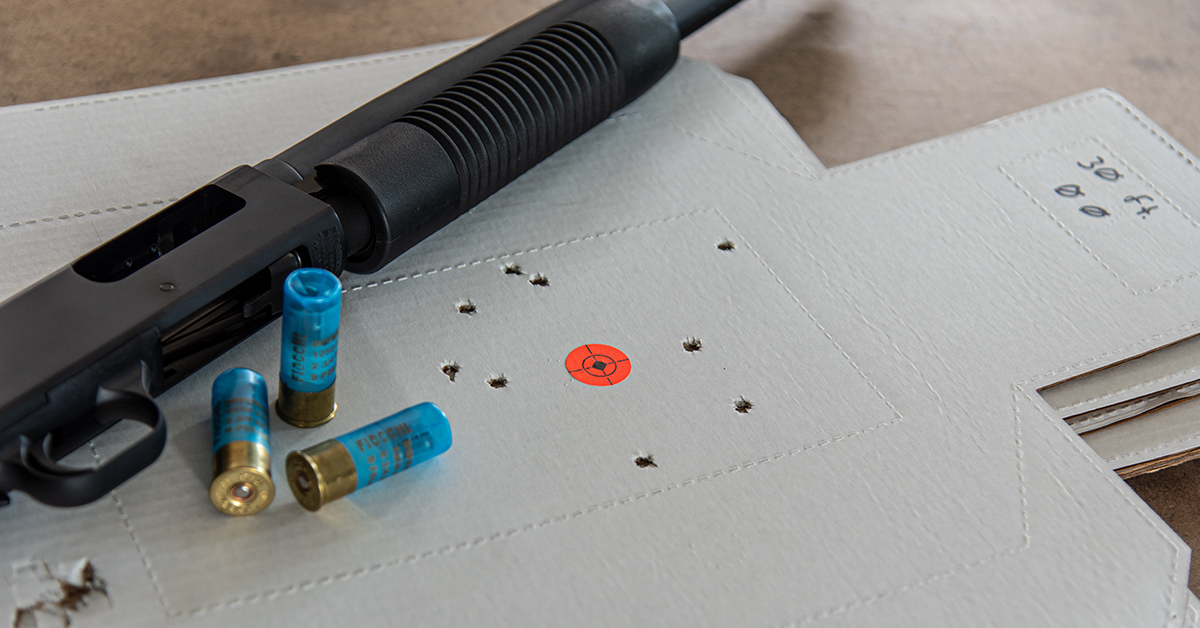
We did some pattern testing a few years ago with a Mossberg 500 defensive shotgun and Fiocchi #00 buckshot and logged a 1.25-inch group (9 pellets) at 10 feet. At 30 feet (10 yards), that group grew to 5.5 inches, and by 20 yards the pellet spread was 13 1/8 inches. When the goal is to put every pellet into the target (and ensure there is no collateral damage from stray pellets), you conclude a couple of things that are verified in training. First, shotguns DO require good aiming and, two, pellet dispersion at typical home defense distances is not as widespread as Hollywood would have you believe.
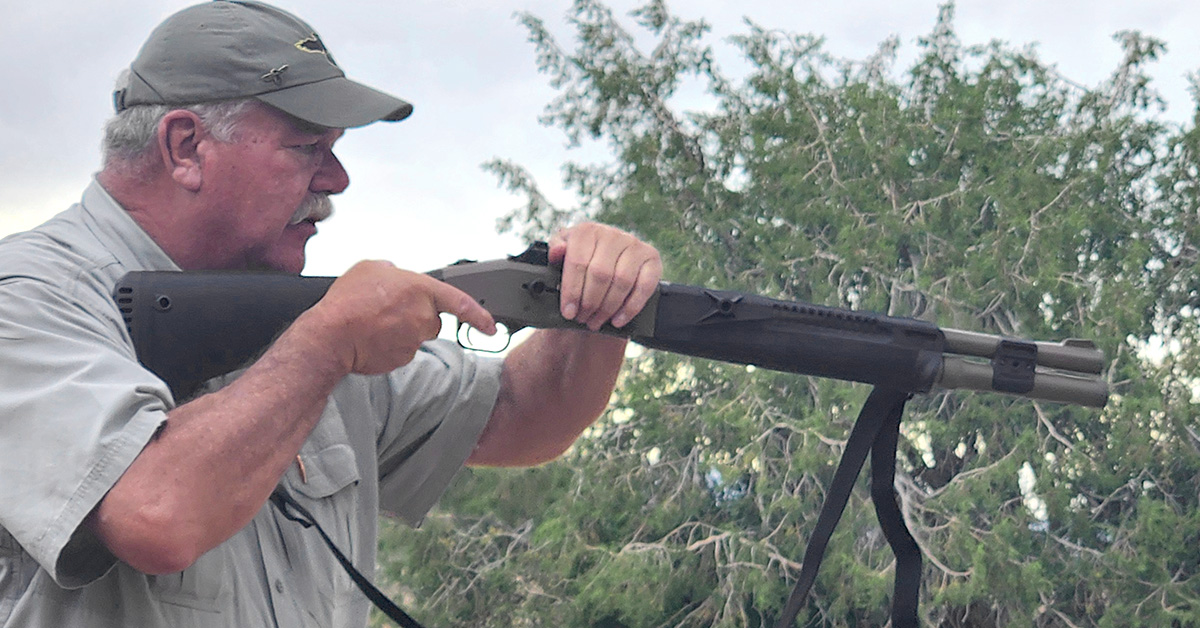
Another foundational component of defensive shotgun handling is learning to reload the gun in the middle of a fight.
Part of the Modern Technique taught at Gunsite is to top off your ammo at every safe opportunity. Shoot a round, and if you can feed a replacement round into the magazine without compromising your situation, do so.
Because it is possible that you may run the gun dry before the engagement is finished, you must also learn to reload directly into the ejection port while maintaining your situational awareness. To maintain situational awareness (keeping your eye on the threat or looking for additional threats), you practice reloading without looking at the gun or your hands. This involves removing a shotshell from the carrier, inserting it into the ejection port or magazine tube, and closing the action — all while keeping your eyes downrange and looking for the next threat.
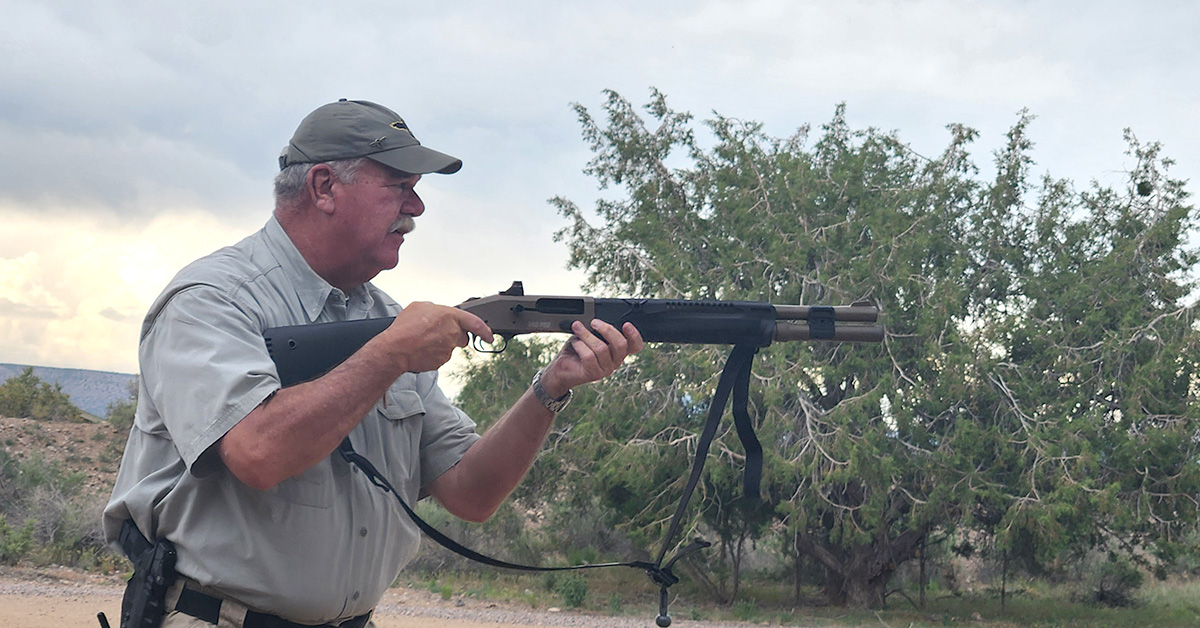
Easy enough, right? It is with proper technique and practice, but then do it under time pressure or competitive stress to help simulate a real-world gunfight while an instructor’s critical eye is watching over your shoulder. You’ll find that there will be plenty of finger-fumbling going on until you get the routine down. Yes, you can and should practice these manipulations on a home range or with inert “dummy rounds” in a safe place at home, but only a professional training environment is going to effectively apply the necessary tension and stress required to build the proper technique and make it stick.
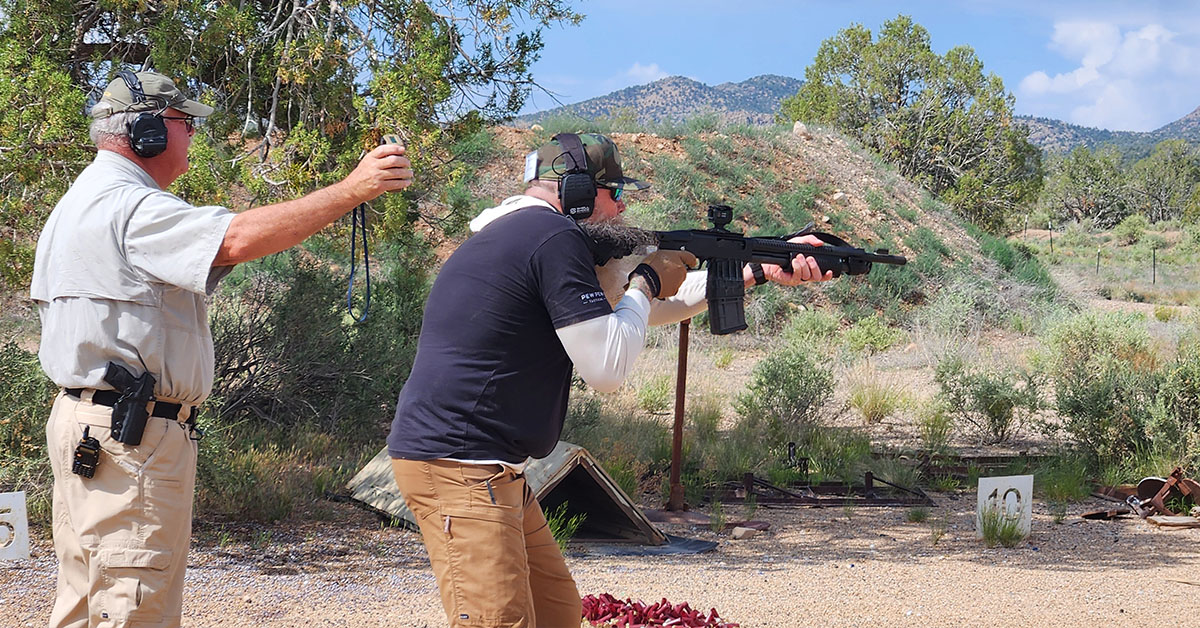
Once the operational foundation is set, the “walk” phase of training begins. Here, things begin to get a bit livelier and louder.
Proper stance is especially important with the shotgun because of the gun’s heavy recoil. Whether you have a good fighting stance becomes immediately apparent at the first shot. If you are standing too straight and not leaning forward at the hips and if you don’t have your rear foot far enough back for stabilization, you’ll be rocked on your heels, toes up at recoil. That may not have huge implications when firing a single round, but you are training to fight, and that means you need to become competent sending multiple rounds downrange as fast as you can accurately execute the shots. Learning the fighting stance will help keep you squared to your assailant during sustained fire so that sight picture reacquisition comes quickly and you maintain your balance instead of getting tossed onto your back after the third or fourth round.
Other important fundamentals are also introduced at this stage, such as high ready, low ready, and inside (or close) ready positions, and how to efficiently shoulder the gun from these positions while seamlessly actuating the safety and achieving your sight picture.
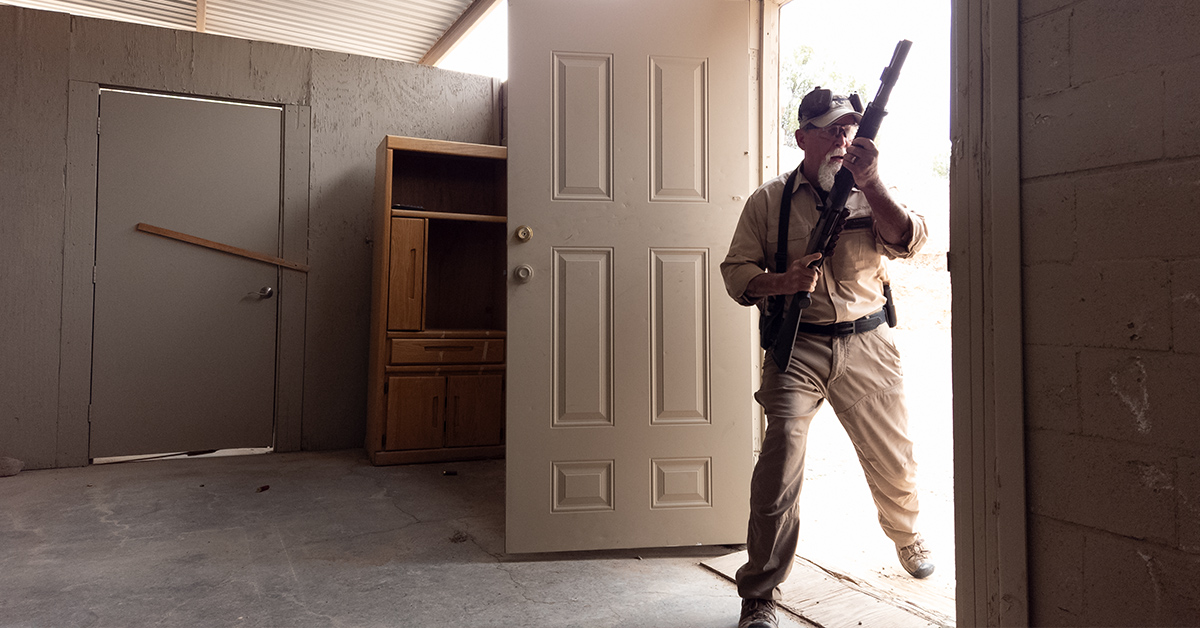
As you can see, these operational and manipulation layers keep stacking up and are introduced in a logical progression that leads to competency.
Someone might say, “Well, I can learn to do all this on my own.” To a limited extent, that might be true for some, but without a qualified instructor to show by example, to explain the theory with “been there, done that” experiential anecdotes, and to apply subtle and not-so-subtle critiques to your performance, you’ll leave a whole lot on the training table that could ultimately save your life.
One might also think they can learn a martial arts discipline from a book and YouTube videos. They’d be equally wrong.
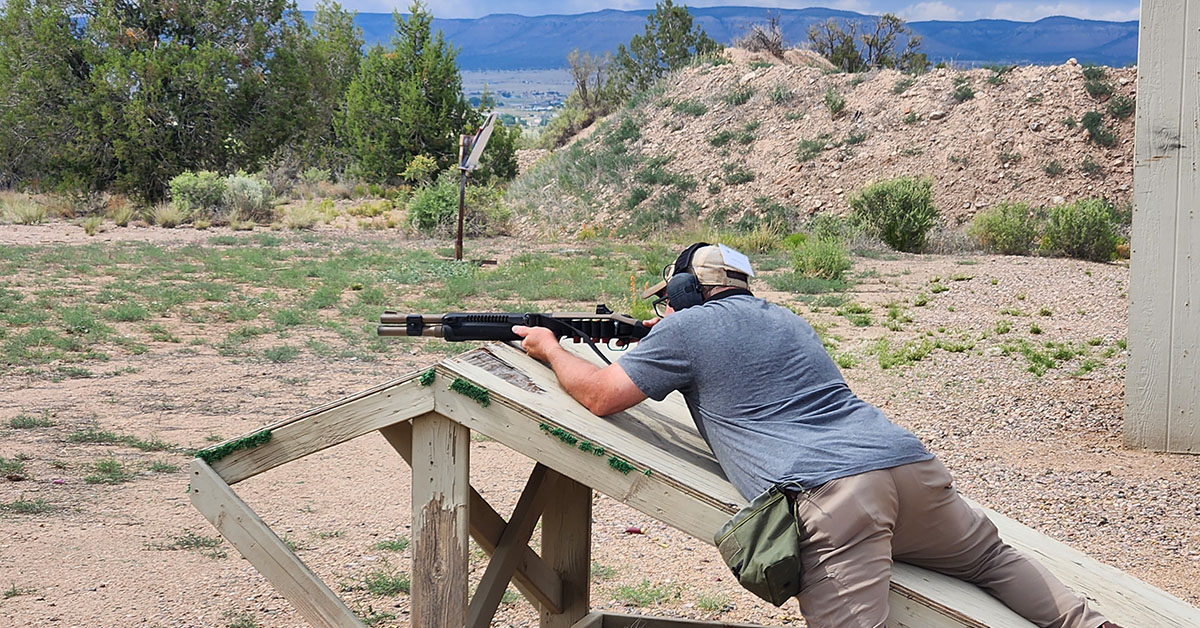
In a properly structured firearms course, skill development isn’t exactly linear. In other words, you don’t achieve full mastery of a particular skill or technique before moving on to the next phase of learning. Think of it as multiple roads, each with different on-ramps merging at different points along the way. The farther down the road you go, the bigger, better, and easier travelling the road becomes. New skills get reinforced and refined as additional skills come on-board. Eventually, you realize that what was once a challenge has become almost second-nature to overcome. You can do it practically automatically, without thinking or fumbling.
And that is the ultimate goal.
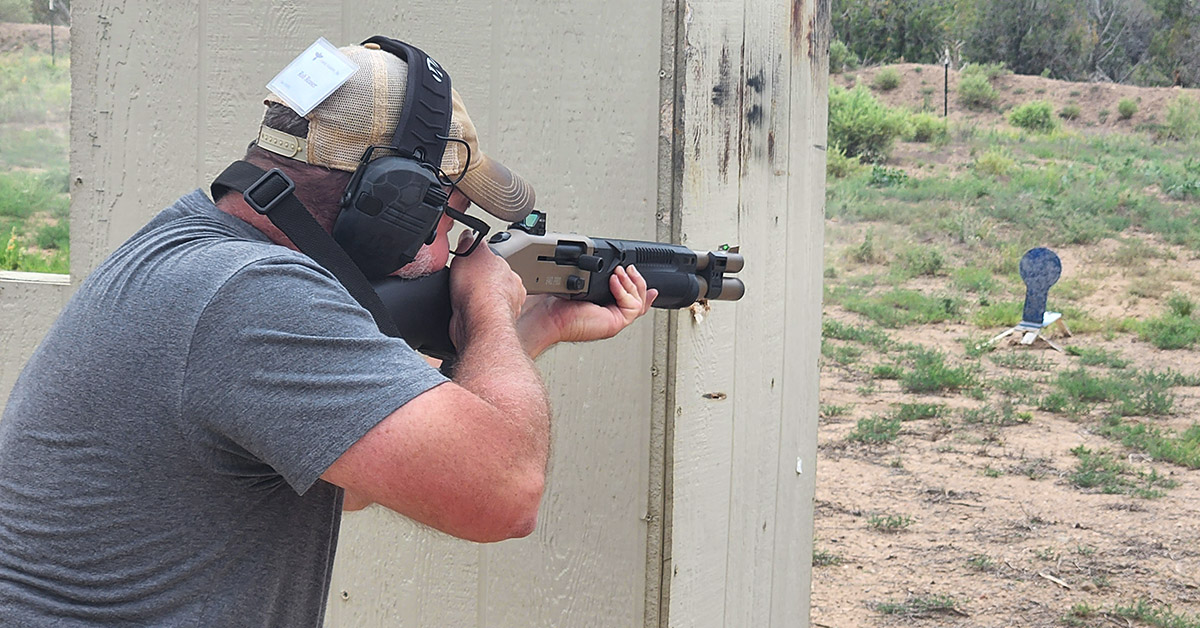
Col. Jeff Cooper, founder of Gunsite, is said to have tagged the shotgun as the “thinking man’s” defensive weapon.
Well said.
Infused in the 260 course is an understanding of the shotgun’s varied defense capabilities and how to exploit them to your advantage. Ammunition type and target distance variables, for instance, must be considered…sometimes in the middle of a fight.
Rangemaster Mario gave us a perfect example of this as it related to a bank robbery shootout in Southern California. The suspect took up position behind an open car door and was firing at the responding officers. Volleys of handgun ammo and #00 buckshot failed to bring the fight to an end. So, mid-stream in the battle, one officer reasoned that a heavier chunk of lead was the only solution to the problem. He inserted a slug round into his shotgun, took careful aim, and fired at the suspect hiding behind the car door.
Problem solved.
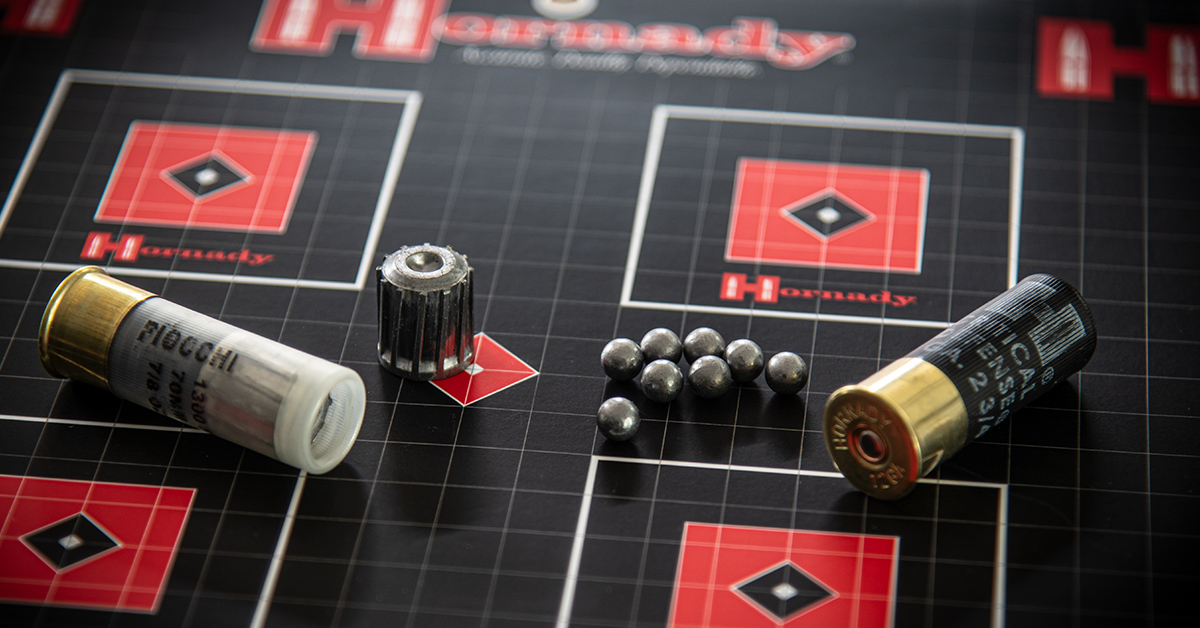
Building on this potential need to switch ammunition during a lethal engagement, we were taught how to do this quickly under stress. This involves inserting a slug into the magazine tube and then ejecting the shotshell currently in the chamber. This action places the slug on the elevator so that when you close the bolt (pump or semi-auto action), the slug round chambers and you’re ready to fire.
Sounds simple enough, and it is. But the guided training comes in when you are required to perform this operation under a time stress while, say, engaging multiple targets at varying distances. Here is where the repetition-under-stress training shows its immense value. In the first attempt or two, you are likely to fumble and lose valuable time. Keep at it, though, and this ammo transition becomes fluid and quick.
Eventually, all the fundamentals and refinements come together in tackling real-world scenarios.
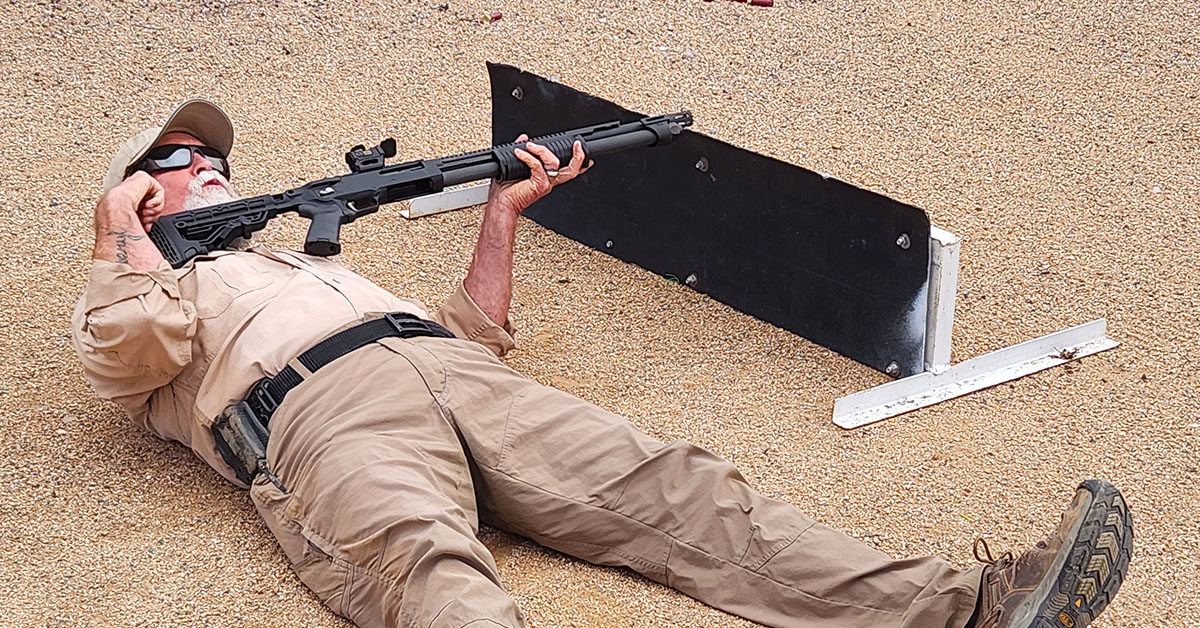
Another advantage of taking formal training at a dedicated training concern of Gunsite Academy caliber is the infrastructure. Gunsite, as an example, has multiple ranges spread across its 3,200-acre facility. This allows for many different target scenarios that simulate what you might encounter at home, on your homestead property, or in a public environment.
We got the opportunity to shoot around and through assorted barricades. This was not an exercise in shooting for shooting’s sake but in learning how to approach a barricade — be it a wall, a door, a window, or even a vehicle — and manipulate the gun and body for maximum engagement with minimal exposure.
An introductory taste of room clearing in a multi-room house is part of the course schedule. Here, Instructor Chris’ years of serving as a breacher in the Marine Corps and as a contractor during the GWoT years illuminated the many considerations and nuances of securing enclosed structures. Everything from high carry or indoor carry to how to “slice the pie” in a room to the footwork needed to transition from room to room and move down a hallway was introduced. We certainly didn’t master this art in the short time we had, but it gave us students a lot to think about and the theories behind the techniques.
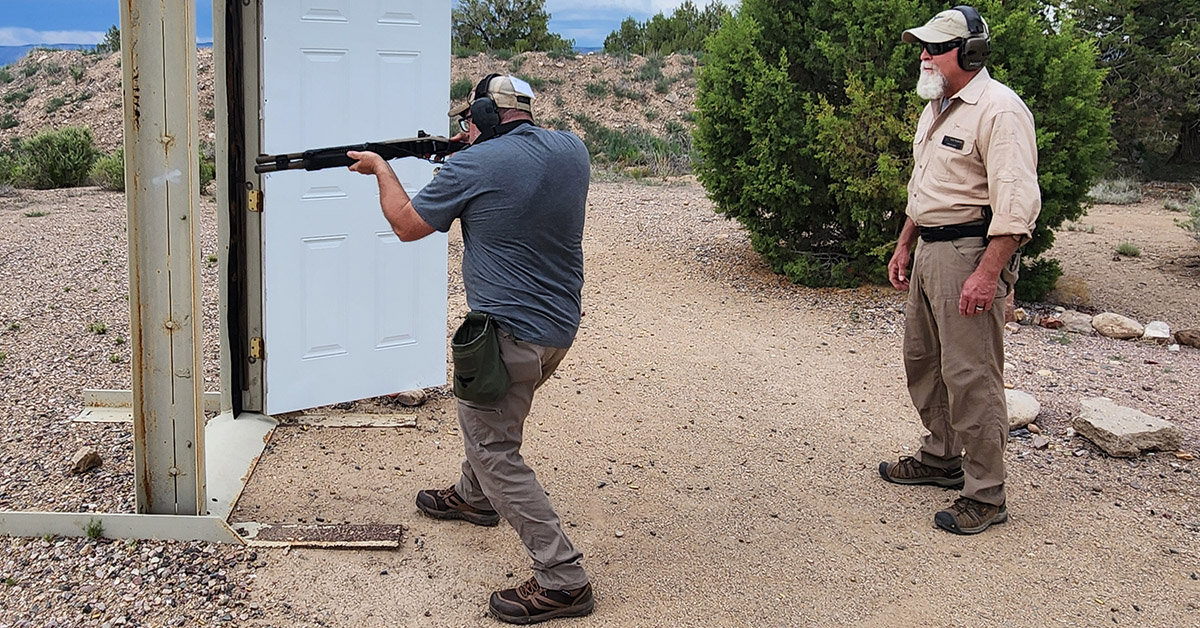
By the end of the 260 Defensive Shotgun course, I had learned several new skill sets that I will practice and refine on my home range, and I came away with a new appreciation for the shotgun’s martial capabilities.
I also came to appreciate the performance of a finely tuned, well-thought-out defensive shotgun like the Mossberg 940 Pro Tactical SPX. If you are in the market, definitely check out our review of this standout firearm. Heretofore, my in-house shotgun has been a Mossberg 500 pump well-appointed for defensive work. After spending three hard-running days with the 940 Pro Tactical SPX, I think this may become my new go-to.
For more information on Gunsite’s training opportunities, class schedules, and more, head over to their website.

